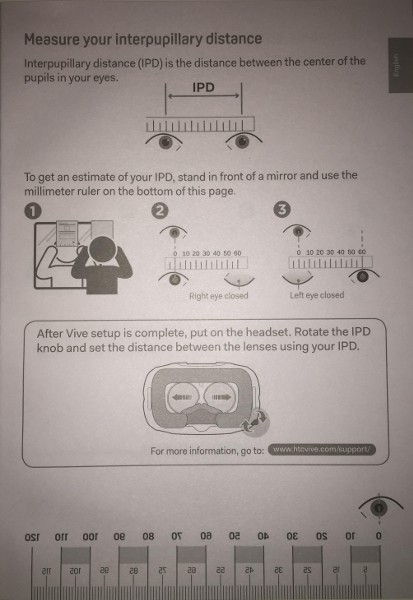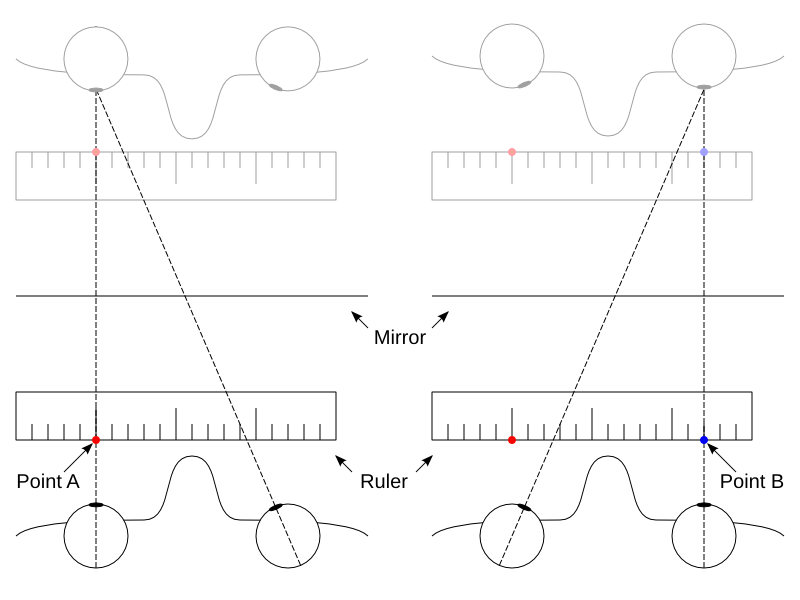I found out today that HTC now ships a tool to measure users’ inter-pupillary distances with new Vive VR headsets. When I say “tool,” I mean a booklet with instructions in many languages, and a ruler printed along one edge of each page:

Figure 1: IPD measurement chart shipped by HTC with new Vives. Image courtesy of reddit user DanielDC88, image source.
I thought this was great on multiple levels. For one, measuring the user’s IPD and entering it into the VR software, either manually or through a sensor on a physical IPD adjustment knob or slider on the headset, as in both Vive and Oculus Rift, is an important component of creating convincing VR displays. The more people get used to that, the better.
On the second level, I was proud. On April 9, 2014, I wrote an article on this here blog titled “How to Measure Your IPD,” which describes this exact method of using a mirror and a ruler. It even became one of my more popular articles (the fifth most popular article, actually, with 33,952 views as of today). I was a little less proud when I looked at my own article again just now, and realized that my diagrams were absolutely hideous compared to those in HTC’s booklet. Oh well. Continue reading


